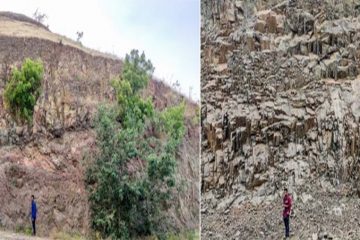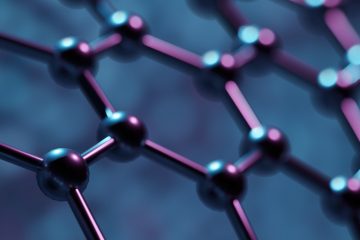 Natural biopolymers made from silk, chitosan, collagen, gelan gum are now not only used to make scaffolds for tissue engineering, but they can also be used to create a “3D cell culture microenviroment” to investigate the proliferation and migration of cancer cells. The information was given to the audience by Dr Subhas C. Kundu of the University of Minho, Portugal at the International Conference on Advances in Polymer Science and Rubber Technology (APSRT) at IIT Kharagpur held from September 24-27. At another session at the same conference, Prof. Sanjib K. Patra of the Department of Chemistry of IIT Kharagpur explained how a new class of polymers developed by his department could be used to develop cheap and efficient chemical sensors for detecting explosives such as nitroaromatics (NACs).
Natural biopolymers made from silk, chitosan, collagen, gelan gum are now not only used to make scaffolds for tissue engineering, but they can also be used to create a “3D cell culture microenviroment” to investigate the proliferation and migration of cancer cells. The information was given to the audience by Dr Subhas C. Kundu of the University of Minho, Portugal at the International Conference on Advances in Polymer Science and Rubber Technology (APSRT) at IIT Kharagpur held from September 24-27. At another session at the same conference, Prof. Sanjib K. Patra of the Department of Chemistry of IIT Kharagpur explained how a new class of polymers developed by his department could be used to develop cheap and efficient chemical sensors for detecting explosives such as nitroaromatics (NACs).

From the use of polymers in life science, to the development of smart materials and composites, novel synthesis and modification process of elastomers to green and sustainable processes and technology for the rubber industry, everything was discussed under the sun at APSRT that saw 250+ delegates from 10 countries, 4 plenary lectures and a cumulative 130 lectures and presentations.
From conventional applications in the field of automobiles, construction, commodity materials and engineering, polymer and rubber materials are finding smart applications in different critical and strategic areas such as defence, microelectronics and the life sciences.
Keeping with the needs, researchers have been developing polymer based composite materials that have unique self-healing and shape-memory properties. But to explore new possibilities, new products and technology, collaboration between industry and research institutions is necessary. In keeping with this objective, APSRT brought together distinguished scientists, faculty members and technologists from the academia and industry the world over.

“The main objective of this conference is to bring the scientists and technologists working in polymer science and rubber technology under one umbrella to discuss recent advances and innovative technologies…They will discuss the future trends towards 2030,” said Prof. Nikhil K. Singha, Head of the Rubber Technology Centre, which organized the conference.
Sustainability was a predominant issue at the conference, with the speakers not only emphasizing on sustainable technology but also the circular economy within which polymer science and the rubber industry had to root itself. The circular economy approach in fact was driving innovation within the broad sustainability framework, that is through waste prevention, re-use, repair, remanufacture and recycling. Attention was directed at the making of automotive tires from dandelion, the use of biobased products like wood scraps being as substitutes for rubber additive. Sufficient attention was also drawn to recycling technology of not only rubber but also PET bottles, and the use of polymeric materials as sustainable solutions for various applications like architectural coatings, protecting coatings, refrigerants and fire suppressing agents. Prof. Sadhan K. De, retired professor of IIT Kharagpur, who was the Guest of Honor at the inaugural session, stressed on the effective utilization, recycle and reuse of plastics.

An overwhelming number of lectures brought home the novel ways in which polymers are being used for biomedical applications. Attention was drawn to how niche products like fluoropolymers can be used to fabricate nanoengineered 3D printed anatomical models for surgical planning and clinical training, nanogels can be used to target and kill cancer cells preferentially, how hydrogels are already being used to produce polyurethane wound dressings capable of indicating infection, how resilin and silk-based hybrid biomaterials can be used to produce hydrogels for cartilage tissue engineering or how molecules are being developed for long term drug release by controlling hydrophilic-hydrophobic balance of the superstructure of molecules that are designed through urethane linkages and other myriad innovations.

The development of new and smart materials drew as much attention. Take the synthesis of PEEK (polyether ether ketone) polymer and its composites that are already being used in aircraft, Dielectric elastomers that can be used in actuators, sensors or artificial muscle, Nanocomposites with periodic arrangement of nanoparticles that can be used in photonic devices and sensors, or the composite polymer material that can immobilize and catalytically degrade nerve agents.
Novel polymerization techniques and the functionality of polymers were also discussed. Some like Dr Huiqi Zhang of Nankai University, China, suggested controlled radical precipitation polymerization. Others suggested the use of ultrasound or ultrasonic polymerization to synthesize polymer nanoparticles or new ways to do RAFT polymerization, design and synthesis of step-growth polymers, or electrospinning to engineer biomaterials for biomedical research. Prof. Anton Klok of EPFL (École polytechnique fédérale de Lausanne), Switzerland, spoke about the bio-application of polymers.

“I am confident that the delegates participating in the Conference will make significant contributions for the development of science and technology and the deliberations by the peer in the field will enthuse the budding scientists to find new directions for further research culminating in sustainable development of rubber science and technology,” said Prof. Sriman Kumar Bhattacharyya, Director, IIT Kharagpur during his inaugural address.
The Chief Guest for the occasion was Prof. Tony McNally of WMG, who also delivered a plenary lecture at the conference. He mentioned that rubber and polymer composites have been one of the main focus of WMG and there are lots opportunity of collaboration in this field with IIT Kharagpur. The American Chemical Society has been associated with the conference and interacted with authors and young scientists on the last day of the conference.
Graphics : Suman Sutradhar



